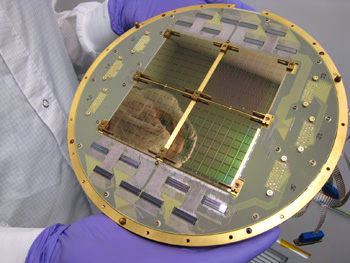As you’ve likely heard, a team of U.S.-based cosmologists located what they believe to be the first direct evidence of the rapid inflation of the universe at the dawn of time.

We covered the story. Local news stations covered the story. Unheard-of blogs covered the story.
But lost in the sheer wow-factor surrounding this news was the technical aspect of what made this discovery possible. Sure the BICEP2 telescope made its way into a majority of stories, but did you know that it was a bunch of custom superconducting circuits created by engineers and researchers at the National Institute of Standards and Technology (NIST) that made it possible to locate these ripples in space?

You see, the chips were specially designed to amplify and organize the electrical signals generated by the microwave detectors tasked with measuring primordial particles of light. The reason: both components were chilled to cryogenic temperatures. If not for the chips, the signals the detectors were picking up would have been all but unreadable by conventional room-temperature electronics.
“This is an exciting and important new result, and we are pleased that technology developed at NIST played a role,” said Gene Hilton, the physicist responsible for production of the NIST chips.
Breaking the technology down to a bit more of a granular level, the NIST chips’ signal amplification abilities were made possible by the Insitute’s superconducting quantum interference devices — SQUIDS for short. The 16 NIST chips used in the BICEP2 telescope contained more than 2,000 SQUIDs in total. Working in cohesion, these components measured the magnetic fields created in the telescope’s coils, and amplified the small currents being generated by the detectors so the tracking devices being used at an indoor facility could read and analyze the data.
So, in conclusion, the way in which the NIST researchers figured out how to wire hundreds of SQUID signal amplifiers together made it possible to design large — and practical — arrays of superconducting detectors.
Outside of exploring the deep reaches or space, it’s worth noting that SQUID technologies cover a broad range of applications, ranging from medicine to mining to materials analysis, and more. Physicists just celebrated the technology’s 50th anniversary of being around.
Story via nist.gov
Advertisement
Learn more about Electronic Products Magazine






